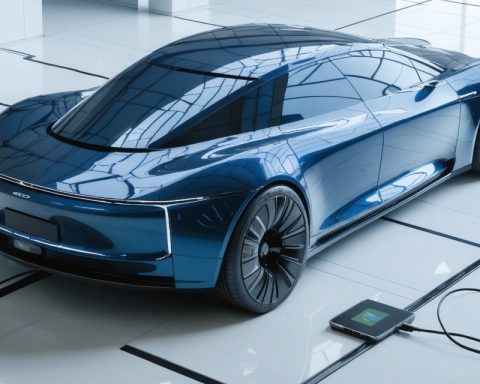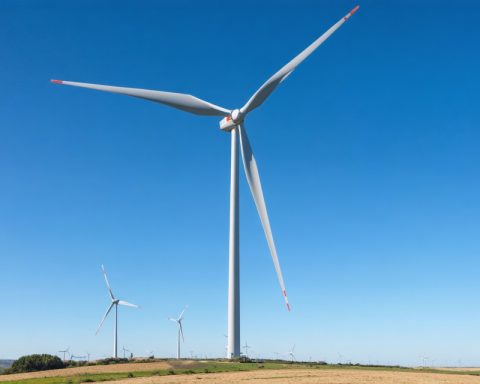- Europe is experiencing a shift to electric vehicles (EVs) driven by diverse government incentives.
- Incentives across 27 EU countries and others like the UK and Norway vary widely, including tax cuts and ownership perks.
- An increasing trend shows a reduction or redirection of direct purchase subsidies in eight European countries.
- Ownership incentives and corporate benefits are becoming more prominent, reflecting environmentally conscious governance.
- Only fourteen EU countries provide fiscal incentives for EV charging infrastructure, highlighting a gap in support.
- The diverse approaches to EV incentives emphasize the need for harmonization to ensure sustainable transport adoption.
As the dawn of electric mobility sweeps across Europe, a silent revolution hums beneath the surface, powered by an eclectic mix of government incentives. These fiscal nudges, diverse in form and magnitude, aim to accelerate the shift from combustion engines to electric vehicles (EVs). However, exploring these incentives reveals a landscape as varied as the continent itself—a patchwork of approaches that mirrors Europe’s rich tapestry of cultures and traditions.
Every one of the 27 EU member states, along with Iceland, Norway, Switzerland, and the United Kingdom, extends a hand to plug-in explorers, but the nature of these gestures diverges widely. The schemes range from generous tax cuts on vehicle acquisition to reduced ownership taxes, weaving an intricate web of financial encouragements that differs from country to country.
The disparity becomes evident at the intersection of the taxpayer and the taxman. While some nations roll out the red carpet for electric company cars, including 19 member states that offer enticing business-focused incentives, others are pulling back on direct purchase incentives. An intriguing shift is happening: eight countries, up from six last year, have dialed back or shifted their focus from purchase subsidies entirely, a reflection of evolving policy priorities and market maturation.
More than ever, the spotlight is on ownership incentives and corporate perks, as governments balance the allure of clean transport with fiscal responsibility. This careful calibration is reflective of environmentally conscious governance that aims to maintain momentum while avoiding market distortion.
But what about the infrastructure that keeps these electric dreams rolling? Here too, the picture is mixed. Only half of the EU member states, a mere fourteen, offer fiscal rewards for charging infrastructure—a critical component for ensuring widespread adoption. This gap highlights an opportunity—a call to action for policymakers to electrify the very veins that will sustain Europe’s green motorways.
Europe’s ambition to electrify its roads is on full throttle, but the journey is far from uniform. It’s a tale of multiple approaches, each with its own narrative twist and plotted destination. As policy evolves and the green grid expands, the power lies with the proactive traveler eager to uncover opportunities across borders.
So while the drive toward a more sustainable future hurdles forward, it remains one laced with regional nuances. The call for harmonization rings clearer than ever, aiming to smooth the road to electric adoption without losing the colorful diversity that defines Europe. Behind the wheel of a zero-emission vehicle, the road ahead promises both excitement and examination—a journey worth taking.
Discover Europe’s Diverse Electric Vehicle Incentives: What You Need to Know
Exploring the Landscape of Electric Vehicle Incentives in Europe
As electric vehicles (EVs) gain popularity across Europe, it’s essential to understand the variegated tapestry of government incentives propelling this shift. While incentives vary significantly by country, the overarching goals are unified: promoting sustainability, reducing carbon emissions, and fostering innovation. However, with different countries adopting disparate strategies, understanding these incentives can be complex.
How-To Steps & Life Hacks for Navigating EV Incentives
1. Research Country-Specific Incentives: Start by investigating the specific incentives offered by each country. The variety can range from tax rebates and exemptions to direct subsidies and grants. Websites like the European Alternative Fuels Observatory provide detailed and up-to-date information on national incentives.
2. Leverage Corporate Benefits: Many European countries are increasingly shifting incentives towards corporate fleets. If you’re a business owner or fleet manager, investigate tax deductions, reduced benefit-in-kind taxes, and other available perks for company cars.
3. Consider Charging Infrastructure: When purchasing an EV, factor in the availability of charging infrastructure incentives. Half of EU member states currently offer financial incentives for residential or commercial EV charger installation.
4. Stay Informed on Policy Changes: Energy policies in Europe are dynamic. Regularly consult resources like ACEA for updated policy changes as more countries pivot from purchase incentives toward infrastructure and corporate tax benefits.
Real-World Use Cases and Industry Trends
– Corporate Adoption: Countries like the Netherlands and Germany are leading in offering tax benefits for electric company cars, promoting a shift towards green business practices.
– Public Transportation Transformation: Cities such as Oslo have reaped success from integrating electric buses into public transportation, showcasing how large-scale adoption can thrive with proper incentives.
Controversies & Limitations
While incentives play a crucial role, they aren’t without controversy. Critics argue that the uneven distribution of incentives can lead to market distortions, where wealthier countries enjoy a more rapid adoption due to generous subsidies, potentially leaving smaller economies behind.
Insights & Predictions
The industry is expected to continue evolving with increasing emphasis on charging infrastructure. This aligns with the ambition to increase the viability and appeal of EVs, particularly for longer distances. Analysts predict a surge in investment in public charging networks as a critical enabler of widespread consumer adoption.
Actionable Recommendations
– For Consumers: Investigate long-term cost savings from reduced fuel and maintenance expenses when considering an EV.
– For Policymakers: Ensure incentives are transparent and easily accessible to prevent disparities in adoption rates across regions.
– For Businesses: Explore bulk purchasing programs and adjust fleet strategies to leverage maximum tax benefits.
Quick Tips
– Look beyond the purchase price. Consider total cost of ownership, factoring in all incentives and subsidies.
– Check local regulations frequently, as incentive programs are subject to change.
– Businesses should consult tax advisors to optimize the fiscal benefits of electric vehicle fleet transition.
As Europe races towards a cleaner, greener future, understanding and leveraging these diverse incentives is critical for consumers and businesses alike. Whether you are a car buyer, a corporate fleet manager, or a policymaker, there’s a road of possibilities to explore in the ever-expanding landscape of electric mobility.

















